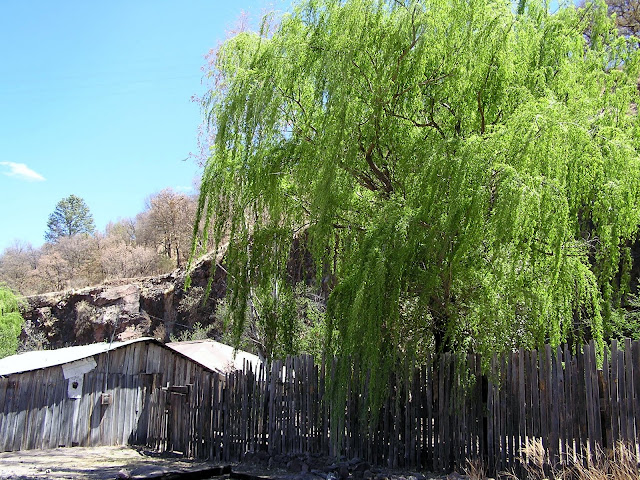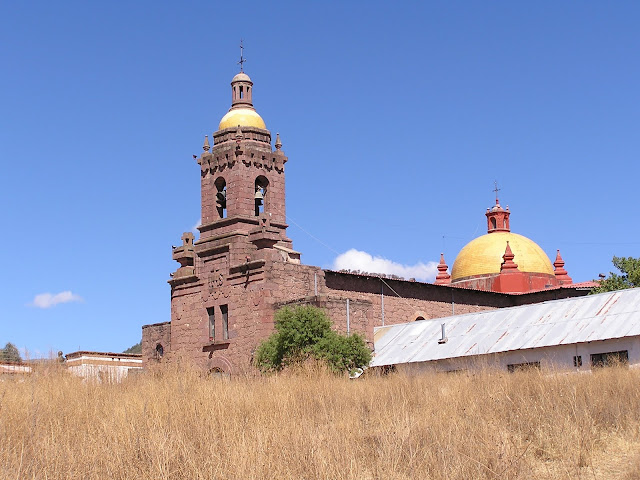The Honcho has been berthed at Marina Palmira, just outside of La Paz for the last week. We've been touring the city, lounging by the pool, shopping for supplies and generally preparing to spend the next five or six weeks cruising among the islands and along the western coast of the Sea of Cortez.
La Paz is an interesting city. The area has been inhabited for thousands of years by indigenous people, but it's modern history began in 1535 when Hernan Cortez arrived and tried to found a colony here. That attempt failed, but in 1596 Sebastian Vizcaino set up shop here and established a successful colony along the shores of the beautiful Bahia de La Paz, which he named. From then until the mid-nineteenth century the city grew in importance as a commercial and transportation center.
In 1853 the town was occupied by one William Walker, an American whose ambition was to create a pro-slavery republic, called the Republic of Lower California. That did not sit well with the Mexican government and Walker's republic lasted only about four months. Not one to give up, Walker later set his sights on Nicaragua, which he invaded and actually set himself up as president of the country. His presidency lasted from July of 1856 to May, 1857, when a coalition of Central American governments defeated his forces and he fled to an American naval vessel and returned to the USA.
In 1860, Walker went to central America, this time to Roatan, where he was intent on setting up another independent state. His luck finally ran out when he was taken into custody by the British Royal Navy, which turned him over to the Honduran authorities who promptly put him before a firing squad.
I wouldn't call this city picturesque. It lies mostly on flat land that is reminiscent of the land around Blythe, except of course, for the magnificent bay on its western side. The climate here is also very Blythe-like.
With a growing population and a relatively high standard of living, La Paz is also the gateway to the Sea of Cortez for many cruising yachts. With it's low cost of living, cheap marinas and good access to the US, it also has a large and growing gringo community. We're ready to leave now, but will wait a couple more days for some strong northerly winds to calm down.
While waiting for the weather window, I've had time to look at some interesting cruising boats and will post something on the J/130 as a cruising boat in the next day or two.
La Paz is an interesting city. The area has been inhabited for thousands of years by indigenous people, but it's modern history began in 1535 when Hernan Cortez arrived and tried to found a colony here. That attempt failed, but in 1596 Sebastian Vizcaino set up shop here and established a successful colony along the shores of the beautiful Bahia de La Paz, which he named. From then until the mid-nineteenth century the city grew in importance as a commercial and transportation center.
In 1853 the town was occupied by one William Walker, an American whose ambition was to create a pro-slavery republic, called the Republic of Lower California. That did not sit well with the Mexican government and Walker's republic lasted only about four months. Not one to give up, Walker later set his sights on Nicaragua, which he invaded and actually set himself up as president of the country. His presidency lasted from July of 1856 to May, 1857, when a coalition of Central American governments defeated his forces and he fled to an American naval vessel and returned to the USA.
In 1860, Walker went to central America, this time to Roatan, where he was intent on setting up another independent state. His luck finally ran out when he was taken into custody by the British Royal Navy, which turned him over to the Honduran authorities who promptly put him before a firing squad.
I wouldn't call this city picturesque. It lies mostly on flat land that is reminiscent of the land around Blythe, except of course, for the magnificent bay on its western side. The climate here is also very Blythe-like.
With a growing population and a relatively high standard of living, La Paz is also the gateway to the Sea of Cortez for many cruising yachts. With it's low cost of living, cheap marinas and good access to the US, it also has a large and growing gringo community. We're ready to leave now, but will wait a couple more days for some strong northerly winds to calm down.
While waiting for the weather window, I've had time to look at some interesting cruising boats and will post something on the J/130 as a cruising boat in the next day or two.









































